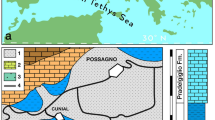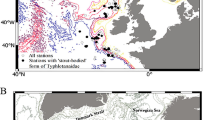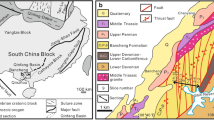Abstract
I HESITATE to ask for valuable space to try to put right some errors; but I think the matter is both biologically and historically important. I have only just seen Dr. D. B. Carlisle's translator's preface to his English edition of Dr. A. V. Ivanov's Pogonophora (Academic Press, London, 1963). I regret that it contains most serious misstatements, giving not only an entirely false impression of the abundance of pogonophores in the Sub-antarctic, but also making quite untrue accusations against the scientific staff of the R.R.S. Discovery working in those waters in the 1920's. These errors have unfortunately grown from his misunderstanding and exaggeration of a light-hearted and no doubt foolish remark I made, so I feel I must try to correct this unfortunate impression. All the dredge and trawl hauls taken by the Discovery and Discovery II (Dr. Carlisle confuses the two ships) were gone through with meticulous care and all the species sorted out and preserved in separate tubes or jars, an operation often taking many hours. At the end there sometimes remained odd bits of debris, perhaps bits of twine or wire broken from the net or lashings of the dredge and so forth, which we classed as ‘gubbins’, or jokingly, the ‘Gubbinidae’, to be more carefully examined before being thrown away. Years later, on looking at specimens of Pogonophora with their long exceedingly thin tubes looking like bits of twine, I told the story of our sorting operations on the Discovery and said, just to emphasize how fibre-like they are: “I would not be surprised if I had thrown some pogonophores away as twine among the Gubbinidae !” It was no doubt a silly thing to say, but I never dreamt it could be taken seriously. If it did happen, not more than one or two specimens might have been lost that way. No large quantity could possibly have been so missed. Dr. Carlisle, who heard me say this, let this story grow in his mind. It may seem childish to worry with it, but his statements are so damaging to British oceanography and scientifically so false, that I feel a correction should be made. Dr. Sidnie Manton has not unnaturally directed attention to his comments in her review of the book in Nature (204, 1020; 1964).
This is a preview of subscription content, access via your institution
Access options
Subscribe to this journal
Receive 51 print issues and online access
$199.00 per year
only $3.90 per issue
Buy this article
- Purchase on Springer Link
- Instant access to full article PDF
Prices may be subject to local taxes which are calculated during checkout
Similar content being viewed by others
Author information
Authors and Affiliations
Rights and permissions
About this article
Cite this article
HARDY, A. Pogonophora in the Sub-antarctic. Nature 206, 733–734 (1965). https://doi.org/10.1038/206733b0
Published:
Issue Date:
DOI: https://doi.org/10.1038/206733b0
Comments
By submitting a comment you agree to abide by our Terms and Community Guidelines. If you find something abusive or that does not comply with our terms or guidelines please flag it as inappropriate.



